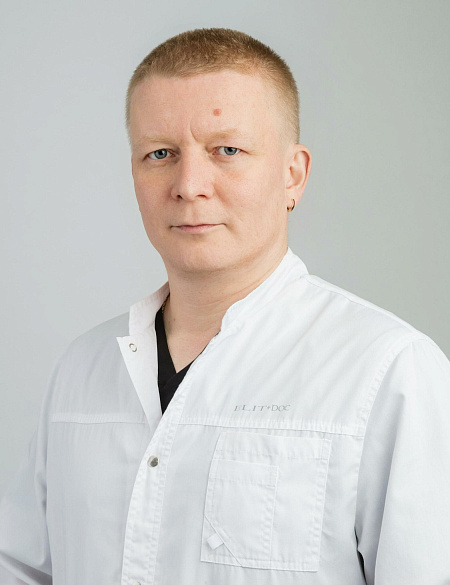Osteoma
An osteoma is a benign bone tumor that develops from mature bone tissue. It grows slowly, rarely transforms into a malignant tumor, and is often detected incidentally during X-rays or CT scans.
General Information
Osteomas most commonly occur in young adults and are localized in the frontal and maxillary sinuses, skull bones, jaws, or long tubular bones. The tumor grows slowly, does not metastasize, and appears as a dense formation that gradually enlarges, compressing nearby structures.
The main concern is not life-threatening risk, but possible functional or cosmetic issues, especially when located in the facial or cranial area.
Causes of Osteoma
The exact causes of this tumor are not fully understood. Modern studies highlight several possible factors:
-
Hereditary predisposition and genetic mutations;
-
Frequent bone injuries or inflammatory processes (sinusitis, frontal sinusitis);
-
Calcium and phosphorus metabolism disorders;
-
Complications after infections, including viral ones;
-
Embryonic abnormalities in bone tissue development.
In some cases, an osteoma forms at the site of old hematomas or after surgical interventions.
Symptoms of Osteoma
In the early stages, the disease is asymptomatic. Small bone growths may cause no complaints and are often discovered incidentally. Symptoms appear as the tumor enlarges and begins to compress nearby structures.
Manifestations depend on the location: headaches, pressure in the forehead, facial asymmetry, nasal breathing difficulty, impaired vision, or hearing loss.
Types of Osteomas
Heteroplastic Osteomas
Formed from connective tissue in the areas where tendons and muscles attach. These osteomas are often found on flat bones or near joints.
Hyperplastic Osteomas
Originate from bone tissue and most often localize in the bones of the skull and facial skeleton. They can have a compact (solid) or spongy structure and enlarge slowly, gradually compressing surrounding tissues.
Osteoid Osteoma
A special type of osteoma, representing a small benign lesion up to 1 cm in diameter. The main symptom is localized pain that intensifies at night. It occurs more frequently in young men, affecting the bones of the lower limbs.
Diagnosis of Osteoma
Diagnostic Methods
To confirm the diagnosis accurately, modern imaging techniques are used:
-
X-ray — helps identify the dense formation and its contours;
-
CT scan (Computed Tomography) — the most informative method for assessing tumor size and exact location;
-
MRI — used when soft tissue involvement is suspected or for surgical planning;
-
Histological examination — necessary to confirm the benign nature of the tumor.
Diagnosis helps the doctor determine the tumor type and choose the appropriate treatment method.
Treatment of Osteoma
The treatment approach depends on the size, location, and clinical manifestations of the tumor. If the growth is small and causes no discomfort, observation with regular CT monitoring may be sufficient. Active treatment is recommended for pronounced symptoms or cosmetic defects.
Conservative Treatment
Used in the early stages and aimed at controlling tumor growth and alleviating pain. The patient may be prescribed anti-inflammatory drugs, vitamins, calcium metabolism correction, and regular medical supervision. However, it is impossible to completely remove an osteoma without surgery.
Surgical Intervention
The main treatment method for osteoma is surgery. The operation is performed under local or general anesthesia and involves complete removal of the bone lesion while preserving healthy tissue. For facial bone involvement, the surgeon aims to minimize cosmetic consequences and restore symmetry.
Methods of Osteoma Removal
Depending on the tumor’s location, various methods are used:
-
Traditional surgical removal with bone instruments;
-
Endoscopic removal through a small incision or sinus cavity;
-
Laser and ultrasound removal — gentle techniques ensuring precision and minimal tissue trauma.
The choice of method depends on the tumor’s size, structure, and its proximity to critical anatomical areas.
Complications of Osteoma
Complications are rare. Possible outcomes include recurrence after incomplete removal, cosmetic defects, soft tissue inflammation, or impaired function of adjacent organs. When treated in a specialized clinic and under medical supervision, the risk of complications is minimal.
Rehabilitation After Treatment
After surgery, the patient remains under medical observation. The recovery period lasts from several weeks to a month. It is recommended to avoid physical exertion, overheating, injuries, and to maintain a proper sleep and nutrition schedule. The doctor may prescribe physiotherapy and follow-up examinations to accelerate recovery.
Prevention of Osteoma
There is no specific prevention. It is important to treat ENT infections promptly, avoid injuries, undergo regular check-ups, and consult a doctor if any lumps or hard growths appear.
Osteoma Treatment in Russia
Clinics
Treatment in Russia is carried out in leading medical centers using modern diagnostic and minimally invasive surgical technologies:
- EMC (European Medical Center) — a clinic with international medical standards. It uses advanced equipment for high-precision diagnosis and osteoma removal with minimal damage to surrounding tissues.
- Medsi — a large network of multidisciplinary centers where experienced surgeons perform operations using endoscopic and microsurgical techniques. Patients receive a full cycle of medical care — from diagnosis to postoperative monitoring.
- Hadassah Medical Moscow — a branch of the Israeli clinic that combines international expertise with a personalized approach. Operations are performed according to modern protocols with a focus on safety and aesthetic results.
Cost
The cost of osteoma treatment in Russia depends on the location, scope of surgery, and chosen method. On average, the price starts from 1,000 USD and may reach 3,000 USD when endoscopic or laser techniques are used.
MARUS Assistance
MARUS helps patients undergo diagnosis and treatment in Russia without the need to organize the process independently. Company specialists select the optimal clinic and doctor, clarify the cost, timing, and surgical conditions, assist with medical document translation and reports, and accompany the patient at all stages — from the first consultation to returning home.
Cooperation with MARUS ensures a safe treatment process in comfortable conditions, with confidence and full control over every step.
Ophthalmology
Oncology
Plastic Surgery
Dentistry
Care Assistants
All information on this website is provided for informational purposes only and does not constitute medical advice. All medical procedures require prior consultation with a licensed physician. Treatment outcomes may vary depending on individual characteristics. We do not guarantee any specific results. Always consult a medical professional before making any healthcare decisions.

Doctors
Choose the package that suits you best — from selecting the right doctor and clinic to full trip and treatment organization
MARUS support options
Choose a package that works for you — from choosing your doctor to full-service travel and treatment
Send a request
You choose the clinic — we’ll take care of travel and treatment arrangements and all the paperwork.

